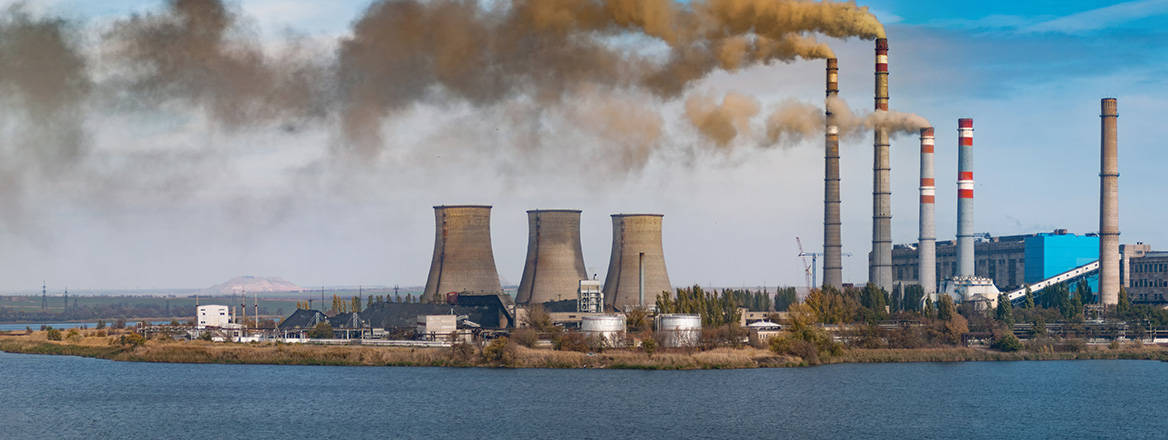Fighting for the Light: Protecting Ukraine's Energy System
A worst-case scenario could see the depopulation of cities, but options remain to head off this eventuality.
Russian missile strikes have been degrading Ukraine's energy infrastructure for months. Before the full-scale invasion, Ukraine could generate up to 32 gigawatts (GW) of power, with actual generation closer to 25 GW. Today, Ukraine struggles to produce nine. While rolling power cuts have been uncomfortable in the summer, the inability to heat homes could prove deadly this coming winter. But the situation is not irretrievable, and there is still time to avoid the most severe risks.
The worst-case scenario is grim. Ukrainian cities have centralised systems for water, sewage and heating. Power cuts put the provision of all three at risk. Heating in particular is either made available by municipalities by filling pipes with hot water, or it is off. But if the pipes are filled and power for heating is lost, the water can freeze, the pipes can burst, and whole communities can find themselves without heating. The past two winters have been mild in Ukraine. A harsh winter season, with temperatures dropping into the negative double digits, risks resulting – by Ukrainian estimates – in millions of Ukrainians seeking refuge in Europe. However, such a scenario is far from inevitable.
A Baseline of Capacity
Although overall power requirements for Ukraine sit between 15 and 18 GW in the winter, the minimum necessary power to run Ukraine's critical services is much lower. The energy requirement to assure heating, water and sewage for Ukraine’s urban population – representing over two thirds of Ukrainians – sits below 2 GW. Industrial processes, lighting, cooking and other important functions demand more power. However, if some predictability can be secured around the availability of power for the most critical needs of Ukrainians, interruptions to other functions could be planned around blackout periods and may be more bearable.
The most effective way of ensuring energy security in Ukraine is the supply of additional air defence systems capable of intercepting Russian ballistic and aeroballistic missiles
While Ukraine is suffering a significant deficit when it comes to its overall energy requirements, the primary barrier to ensuring energy supply for the country’s most critical utilities is not so much power generation as it is the ability to manoeuvre generated energy across the grid to where it is needed.
Prior to the full-scale invasion, 52% of Ukraine’s energy came from the country’s four functioning nuclear power plants. Following the Russian seizure of the 6 GW Zaporizhzhia nuclear power plant, Ukraine’s remaining nine reactors have a total generation capacity just short of 8 GW. Russia has thus far not struck Ukraine’s nuclear reactors directly, and is unlikely to do so in the future. However, it can and has extensively struck the transformer substations that deliver energy to the nuclear power plants and distribute power from the reactors to the rest of the country. Not only do such attacks prevent the distribution of energy from the remaining unoccupied reactors to the rest of the grid, but they also pose a serious nuclear safety risk. Disconnection from off-site power supply can compromise the functioning of key reactor systems, while the inability of a power plant to offload the energy it generates to the grid compromises the safe operation of the plant and normally prompts an emergency shutdown of reactors.
Due to the highly redundant nature of its largely Soviet-designed energy network, Ukraine has managed to redistribute electricity generated from its reactors when nuclear power plant connections to the grid have been cut off. As the grid sustains more and more damage, however, the ability to redistribute in this way diminishes, increasing the threats to distribution and nuclear safety described above. Indeed, prior to the full-scale invasion, Ukraine had approximately 56 GW of transmission capacity in its energy system, giving it considerable resilience to redirect energy as key substations were destroyed. Today, the transmission capacity is close to Ukraine's generating capacity, limiting options for rerouting energy when parts of the grid are cut off.
In addition to nuclear power, Ukraine’s energy grid is also fed by hydro and thermal power plants. These have also been extensively targeted over the last two and a half years. The Russians have successfully degraded thermal power generation; the hydro plants are more resilient, but generating capacity from them cannot be expanded significantly. Solar and wind production are not a reliable addition to Ukraine’s energy generation mix, as they produce variable amounts of power and therefore cannot consistently balance the grid. Ukraine has the capacity to import or export between 1.4 and 1.7 GW of energy depending upon climatic conditions, but its interconnectors can and have been targeted as well. Furthermore, likely energy shortages in neighbouring countries in the coming winter season will limit the amount of excess energy that will be available for export to Ukraine.
Protect, Disperse, Rebuild
Despite this complex picture, options exist for significantly improving Ukraine's energy security before the winter. The foremost requirement and most effective way of ensuring energy security in Ukraine is the supply to the country of additional air defence systems capable of intercepting Russian ballistic and aeroballistic missiles. The provision of Patriot batteries and stocks of interceptors is critical, as are shorter-ranged systems for defeating Shahed-136 cruise munitions. As the number of intersections in the electricity grid shrinks, the importance of protecting key targets increases. Air defence alone will not stop transformer substations and other critical parts of the system from being damaged. The Russians can plan and execute complex strikes that work around defensive systems. However, the need to set up complex attacks reduces the number of targets the Russians can service, and the tempo of attacks they can maintain. Air defence therefore limits damage and buys time.
However, it is unlikely that Ukraine’s partners will be able to supply sufficient additional air defence capabilities to fully protect the power grid. Other lines of effort must therefore be pursued concurrently. First, Ukraine must accelerate its programme of building passive protection around transformer substations. Although the sites have been identified and materials procured, the level of hardening has been limited. Completing this process of hardening transformer substations increases the number and sophistication of munitions that must be used to damage them, thereby slowing the tempo at which Russia can degrade the grid.
Ukraine faces a harsh winter, but there are the means and there is the time to avoid a worst-case scenario
Second, the provision of gas piston engines or gas turbines to Ukrainian municipalities will provide manoeuvrable local energy production capacity. Ukraine has significant distributed LNG reserves. Small gas modules in multiple cities could assure a baseline of power for critical utilities for the periods when access to the wider grid is severed, bridging the gap while repairs are undertaken. The question is how many such turbines can be donated with sufficient lead time to integrate the piping and pumps necessary to connect them to local grids.
The third line of effort must be the stockpiling of transformers that are compatible with the Ukrainian energy network. Because of differing voltages, there are a limited number of countries – namely, those in the former Soviet bloc, as well as Japan and South Korea – that are likely to have transformers suitable for integration into the Ukrainian network. Challenges in their transport and the long manufacturing lead times create additional complications for the timely production and supply of transformers to Ukraine. However, as Europe continues to decommission coal-fired power stations and other facilities, there may be additional compatible transformers that could be donated to Ukraine as they become available. These can be added to stockpiles – like those being assembled in Poland and Romania – to ensure that as Russia targets substations, the grid can be repaired.
The bottom line is that Ukraine faces a harsh winter, but there are the means and there is the time to avoid a worst-case scenario. As large towns in Donbas – like Pokrovsk – come into range of Russian artillery, more Ukrainians are likely to become internally displaced. Ensuring that alternative refuge with the basic utilities remains available is a humanitarian imperative. While not all of Ukraine's partners may have additional air defences to offer, money, expertise and critical components can all contribute to fighting for the light.
The views expressed in this Commentary are the authors’, and do not represent those of RUSI or any other institution.
Have an idea for a Commentary you’d like to write for us? Send a short pitch to commentaries@rusi.org and we’ll get back to you if it fits into our research interests. Full guidelines for contributors can be found here.
WRITTEN BY
Dr Jack Watling
Senior Research Fellow, Land Warfare
Military Sciences
Darya Dolzikova
Senior Research Fellow
Proliferation and Nuclear Policy
- Jim McLeanMedia Relations Manager+44 (0)7917 373 069JimMc@rusi.org




